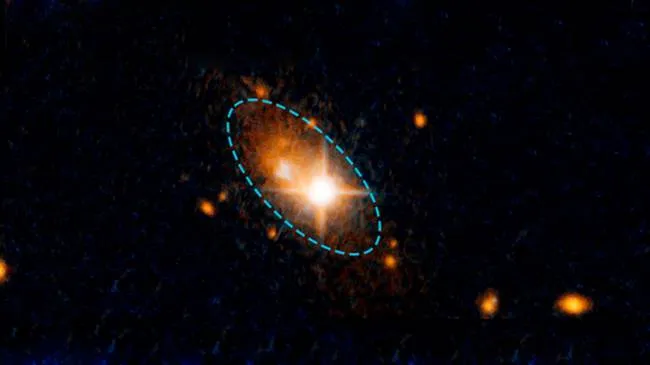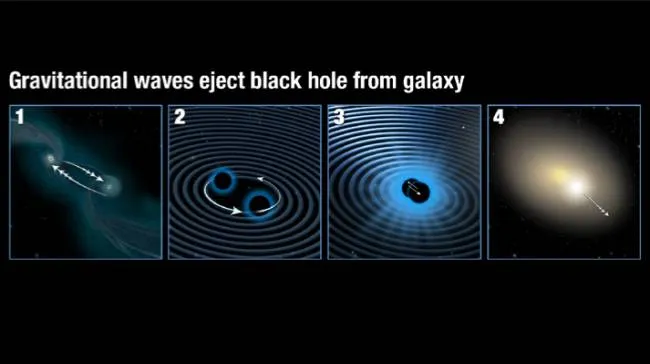
Sky scientists have discovered a distant galaxy, a super-mass black hole that is thrown out of the galactic center with enormous power of gravitational waves.
Even though the precedence of such an event was doubtful, it could not be confirmed until this time. This massive black hole detected by the Hubble Space Telescope has a mass greater than one billion solar masses.
According to researchers' estimates, energy equivalent to the energy of a burst of 100 million supernovae at the same time is required for a black hole to be thrown in this way. The most plausible explanation for such an energy is the application of a force by the gravitational waves which are evolved by the intervention of two large black holes at the center of the galaxy.
The Hubble images taken at near infrared and optical wavelengths yielded the quadrangle and galaxy called 3C 186 in a galaxy cluster 8 billion light years away. With these images, there were weak arc-shaped signs produced by gravitational dragging between the two galaxies that were called the main galaxy tidal tails and colliding. This evidence shows a possible union between 3C 186 and another galaxy.
The team led by Marco Chiaberge of STScI and Johns Hopkins University calculated that the distance from the galaxy was about 35,000 light years away from the center of the black hole by comparing it with the distribution of a normal elliptical galaxy obtained from a computer model.
The researchers estimated the mass of the black hole with spectroscopic observations from the Hubble and Sloan survey and measured the speed of the gas trapped near it: They found that the gas around the black hole was moving 4.7 million miles per hour from the center of the galaxy. This measurement also describes the rate of black hole due to mass gravity.
With this evidence and theoretical work, the researchers have developed a scenario that explains how the giant black hole can move from where it is centered. According to the theory, the two galaxies converge and the black holes settle at the center of the newly formed elliptical galaxy, while the black holes rotate around each other, and the gravitational waves propagate around.

Each black hole collision does not produce unbalanced gravitational waves that push one of the black holes in the opposite direction. "This asymmetry depends on the properties of the black holes and the relative orientation of the pre-uniaxial rotation axes," said Colin Norman, a member of the STC team from Johns Hopkins University.

An illustrative figure that shows how a black hole can be driven out of the galactic center. © STScI
An alternative explanation for the slipped quasar, if not much, suggests that this brilliant object is not found in the galaxy, and that it lies behind the galaxy. If this were the case, a galaxy had to be detected on a backplane that contained a quasar.
The team plans to use Hubble to observe this strange object together with ALMA and other tools to more accurately measure the speed of the black hole and gas dislocation.